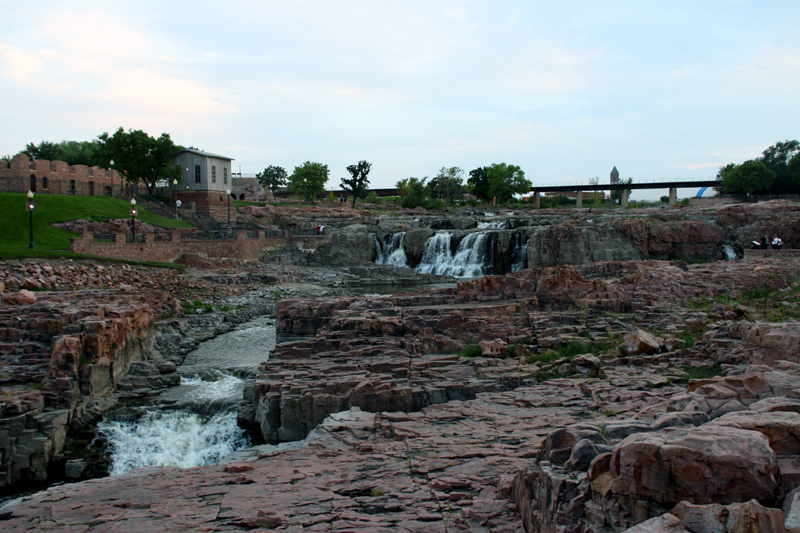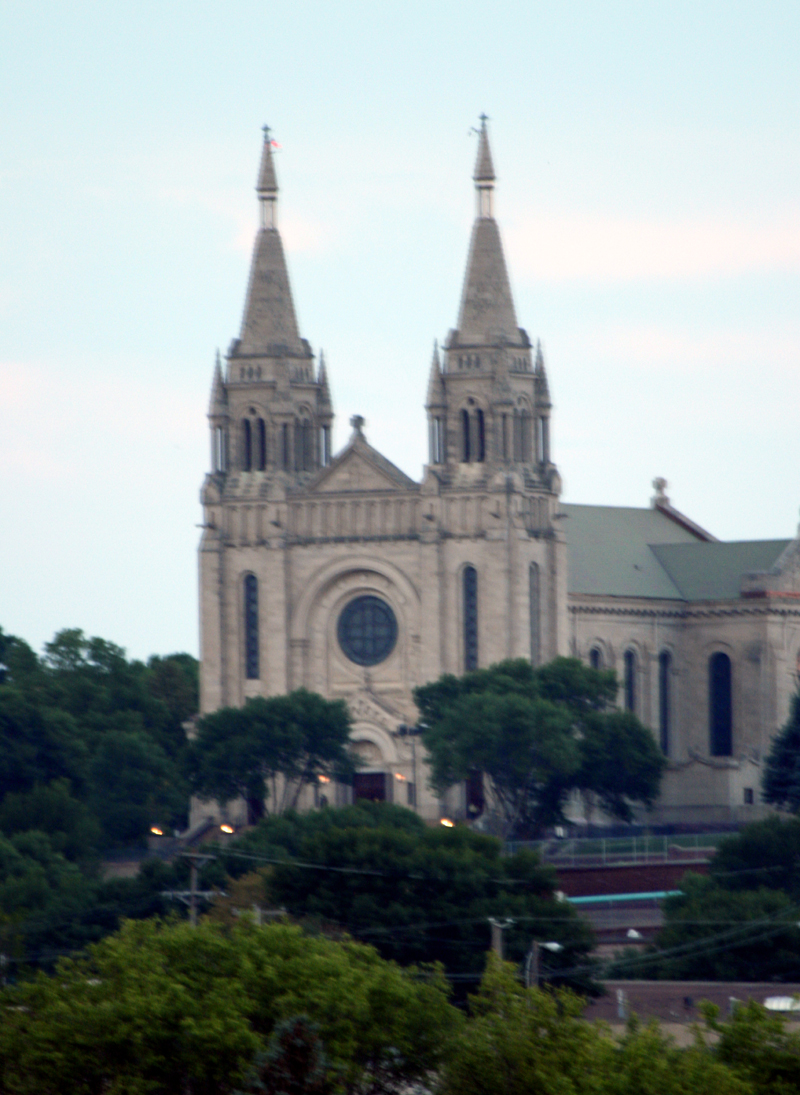Article and photos
by Kathleen Walls
The Falls of the Big Sioux River has been the heart
of the area even before the founding of its namesake city of Sioux Falls
in 1856. There is evidence that Paleolithic tribes used the falls area
for much the same purpose it is used today, as a recreational area. The
Lakota, who were the native people in the area when the white settlers
first arrived, visited the falls for that purpose and told stories of
them to European explorers.

Interestingly enough, the city founders saw the
falls as a industrial resource rather than a recreational treasure. The
beautiful tumbling water was seen as a cheap power source. Many of Sioux
Falls' earliest industrial buildings were focused around the Falls. When
you visit today, it's like a step back in history.

The ruins you see across the river are the remains
of the seven-story Queen Bee Mill. It was begun in 1878, spearheaded by
Richard Pettigrew, a
industrialist who believed Sioux Falls needed its own mill. The mill was
constructed of local Sioux
Quartzite quarried on site at a cost of almost
$500,000. The pink quartzite that
forms the bedrock of the falls is over a billion years old. It's colors
vary from pink to deep red depending on the amount of iron oxide
contained.
The mill
opened on Oct. 25, 1881 and could process 1,500 bushels per day. It was
one of the most advanced in America for its time. However, by 1883, the
mill shut down. There was not enough water power and too little wheat
grown in the area. A few other companies tried in vain to resuscitate
the mill but In 1929 it was converted into a warehouse. Then
Jan. 30, 1956, a great fire
destroyed most of the interior of the structure.
The upper walls were later
knocked down as a safety precaution.

Another early attempt to exploit the water power of
the great falls was the Sioux Falls Light and Power Company building,
now the Falls Overlook Cafe. It was built in 1908to house three
500-kilowatt hydroelectric generators that were powered through the dam
and the millrace from the Queen Bee Mill. It operated until
1974 and
was donated to the city in 1977.

For picnickers and events, the park offers a
wonderful 200' long by 42' wide outdoor shelter with tables. There
is electricity and water. It is set back a few yards from the Big Sioux
River and Recreational Greenway, a
19.13 mile trail that begins at Falls Park and loops around the
city. The shelter serves as the
home of the local Farmers Market .

The visitors center with its five-story, 50 ft.
viewing tower offers a spectacular view of the city.

Saint Joseph's Cathedral stands out against
the skyline and marks the site of the early residential
development
known as the Cathedral Historic District. On June 1974 this
became the first historic district in South Dakota to be listed on the
National Register of Historic Places.

There are several noteworthy statures in the park,
Monarch of the Plains , a 12 ton mahogany granite buffalo carved by
Darold Bailey,
For Which It Stands created by James Haire,
a lifelike bronze of two children pledging allegiance to the flag, and
American Farmer, also a
bronze, created by Sondra Jonson to honor the rural family patriarch.

Today the park covers 123 acres. An average of
7,400 gallons of water drop 100 feet over the course of the falls each
second.
No matter what your interest, there is a lot to fall for at Falls Park.
For more info:
http://visitsiouxfalls.com/visitors/things-to-do/falls-park/br>
|





















